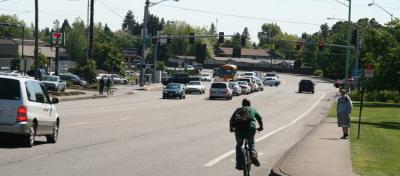
The Metropolitan Transportation Plan (MTP) provides a comprehensive, long-range look at the Salem-Keizer region and how to meet the anticipated transportation needs in a manner that is fiscally prudent. It is based on projections of population, employment and land-use for the communities during the next 20+ years. Projects that have a reasonable certainty of being funded and address mobility and safety needs and enhancements to the regional system or provide new service are identified in the plan.
On January 25, 2022, the SKATS Policy Committee approved the renaming of the Regional Transportation Systems Plan (RTSP) to the Metropolitan Transportation Plan (MTP) as part of the 2023 – 2050 Update. The 2023-2050 MTP was adopted by the SKATS Policy Committee on May 23, 2023. The next update is due by May 2027.
Associated with the MTP is the federally required Air Quality Conformity Determination. This document is updated at the same time as the MTP update.
The chapters and appendices of the 2023-2050 MTP are available below.
